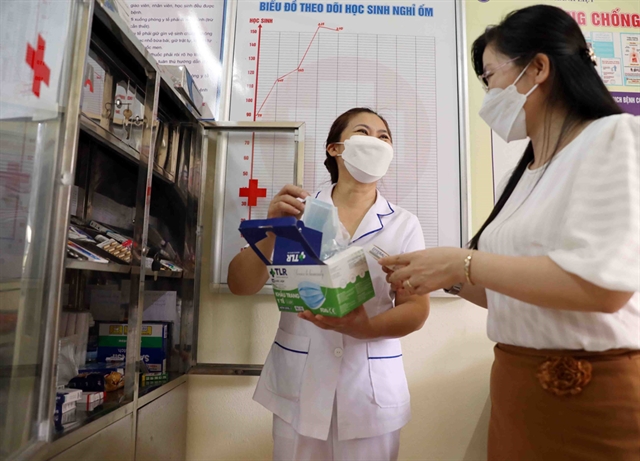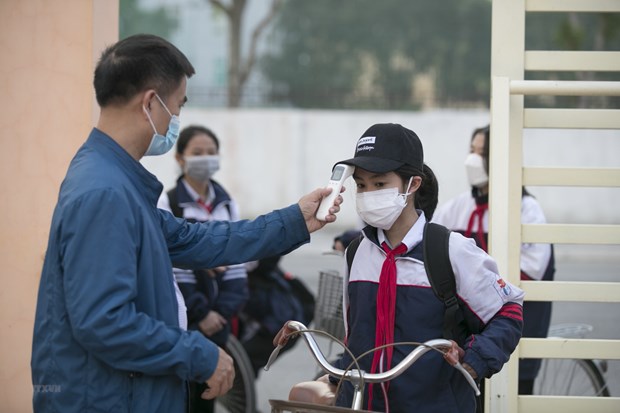 Society
Society

School health workers have played an important role in keeping schools open for in-person learning during the pandemic. However, many schools have grappled with a severe shortage of staff, according to the Ministry of Health.

|
| A school medical staff introduces medical equipment to prevent the COVID-19 pandemic for students and teachers at the school's medical room. — VNA/VNS Photo |
HÀ NỘI — School health workers have played an important role in keeping schools open for in-person learning during the pandemic. However, many schools have grappled with a severe shortage of staff, according to the Ministry of Health.
There are more than 23 million students nationwide, accounting for about 25 per cent of the total population.
Health staff play an important part in educational organisations as students need to receive healthcare services and prevent common school-age illnesses, said Deputy Minister of Education and Training Ngô Thị Minh.
However, a shortage of health staff at schools has received less attention. Inadequate investment in healthcare services at schools has led to the low quality of health workers.
A survey conducted in 2019 by the ministry’s Department of Physical Education showed that there are 40,493 schools nationwide, but only 74.9 per cent have health staff.
Of that, 21.2 per cent of these staff are contracted workers. The number of staff with professional qualifications accounts for only about 30 per cent.
A shortage of school nurses means that schools may have to ask staff without medical training, such as librarians or accountants, to do the job. Although they are trained in first aid, they are not experienced trained medical professionals.
In Hà Nội, there is a shortage of 423 school health workers. The city stopped recruiting medical staff at public schools in 2015.
Director of the city’s department Trần Thế Cương said to perform first aid and monitor student health in the pandemic, the Department had asked the city for permission to continue recruiting school health workers or contract qualified medical staff to provide primary health care for students and detect COVID-19 symptoms.
School healthcare services do not simply provide first aid but also organise health education such as knowledge about COVID-19 prevention and control, building nutritional meals for kitchens and checking food sources brought into schools.
Cương said when the pandemic broke out, school health staff directly coordinated with local health units to develop a response plan for the pandemic at schools.
When students resume in-person classes, medical staff must give updates on the pandemic every day, as well as inspect students and teachers to take measures to prevent the virus, and ensure medical rooms are fully equipped.

|
| A teacher checks a students' body temperature before class. Many schools have faced a shortage of medical staff. |
Nguyễn Thanh Đề, Director of the Department of Physical Education, said the ministry had asked localities to arrange and ensure that there were always medical staff on duty during school hours.
The ministry has also proposed the Government allow schools to contract staff at local health centres or private health businesses for up to six months when no full-time staff are available.
Recently, Deputy Prime Minister Vũ Đức Đam approved the school health programme for 2021-2025. Local authorities at all levels will review and rearrange the school health system in educational institutions to ensure schools have full-time medical staff to monitor school health services.
The programme targets that 95 per cent of school medical staff are fully trained in school health work, and that 95 per cent of schools are equipped with medical rooms, beds, first-aid kits, essential medicines and remitted funds from health insurance for student health care.
To achieve these goals, the programme focuses on perfecting administration and policies on school health work and arranging school medical staff at both public and private educational institutions. — VNS




